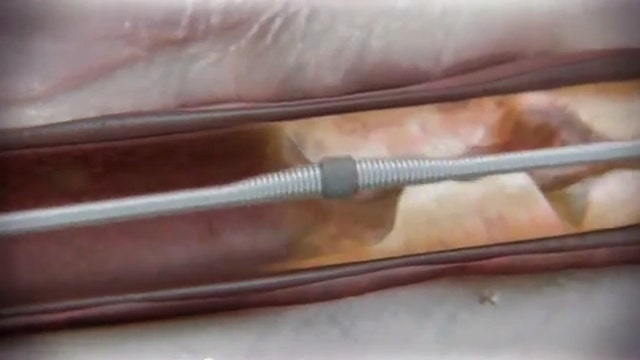Clearing clogged arteries
New technology clears plaque from severely blocked arteries before stent placement
Susan Sperling, 75, had no history of heart disease, so when she started having chest pains that came and went, she didn’t think much of it.
“If I would stop walking, it would stop; so I guess I didn’t take it seriously enough,” said Sperling. “I really waited too long to see a doctor.”
Sperling continued to have pain for six weeks before finally seeing her doctor for an electrocardiogram (EKG), which revealed a 95 percent blockage in her main coronary artery. Sperling’s doctor referred her to Dr. Samin Sharma, director of clinical and interventional cardiology at The Mount Sinai Hospital in New York City, who determined she would need stents placed in the artery to prop it open.
“We dilate the blockage with a balloon, and then we put [in] a stent; so all the plaque remains behind the stent,” said Sharma. “But in some cases, it needs to be removed, because otherwise … the stent will not open up or expand.”
Coronary artery disease affects more than 16 million people in the United States. Calcium in the arteries is relatively common in aging patients, but certain conditions like liver or kidney disease and diabetes can increase an individual’s risk of developing it.
Because the plaque buildup on the walls of Sperling’s artery was calcified, Sharma performed a coronary atherectomy procedure to remove the plaque before placing her stent.
“Some studies actually have shown that once you have a heavily calcified blockage, and you don’t do the atherectomy, your complications actually are higher,” said Sharma.
Coronary atherectomy has been around for more than 20 years, but the technology used to perform it has been complex, leading some doctors to opt for open heart surgery to remove large blockages. But new technology called the Diamondback 360 Coronary Orbital Atherectomy System was recently approved by the U.S. Food and Drug Administration (FDA), and the method is making it easier and safer for patients to undergo the procedure.
The system uses a rotating diamond-coated crown fed up through a catheter to sand away calcified plaque without blocking the artery.
Sperling was back on her feet a day after surgery, and she said she is grateful doctors caught her coronary artery disease in time.
“If you feel these, anything like this, take care of it right away,” she said. “If it turns out that it's nothing, it's nothing. You didn't lose anything. But you can lose a lot if you wait too long.”
For more information on the company's website, click here.





















